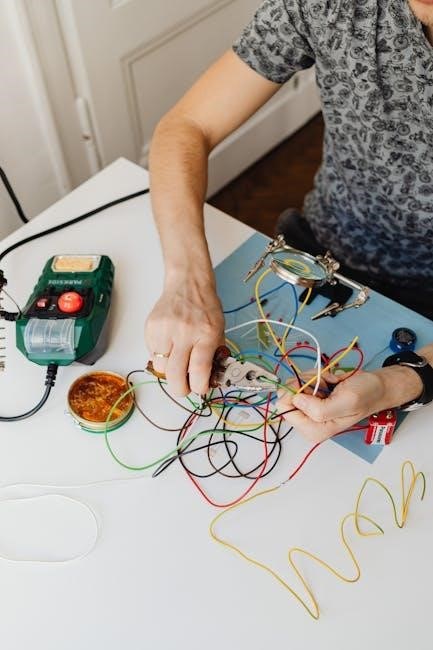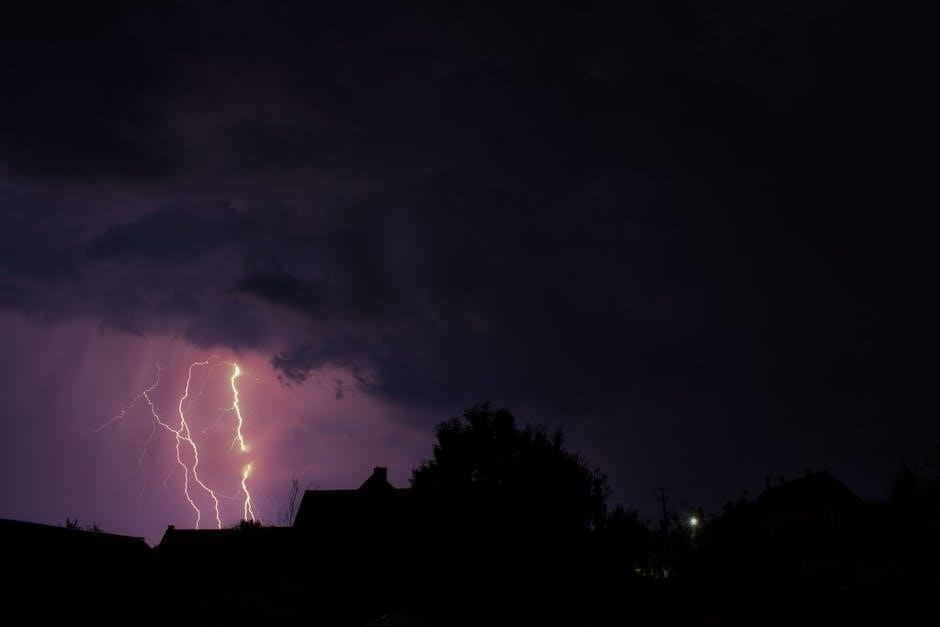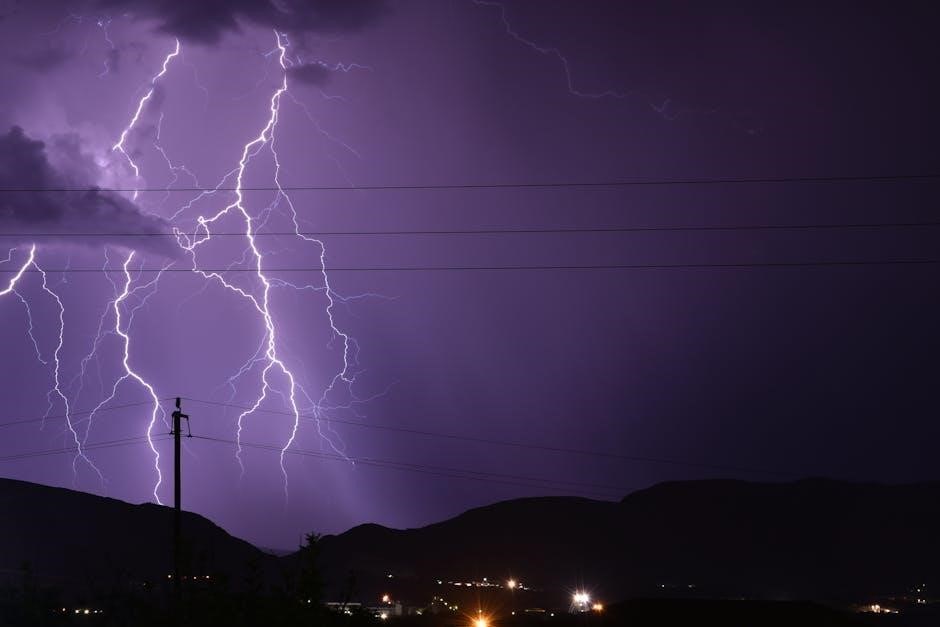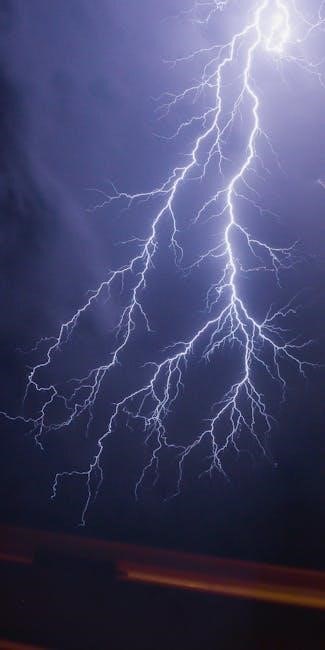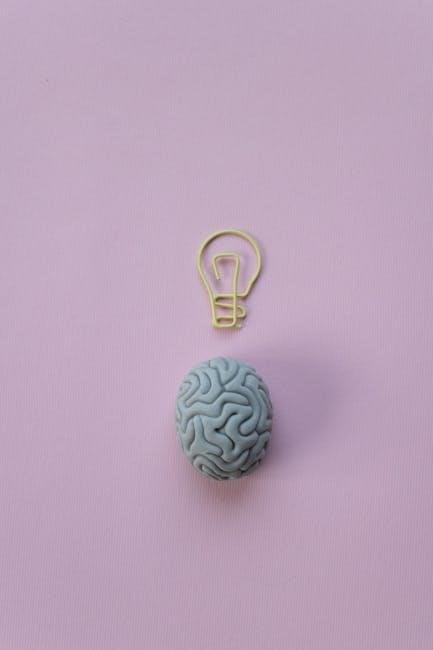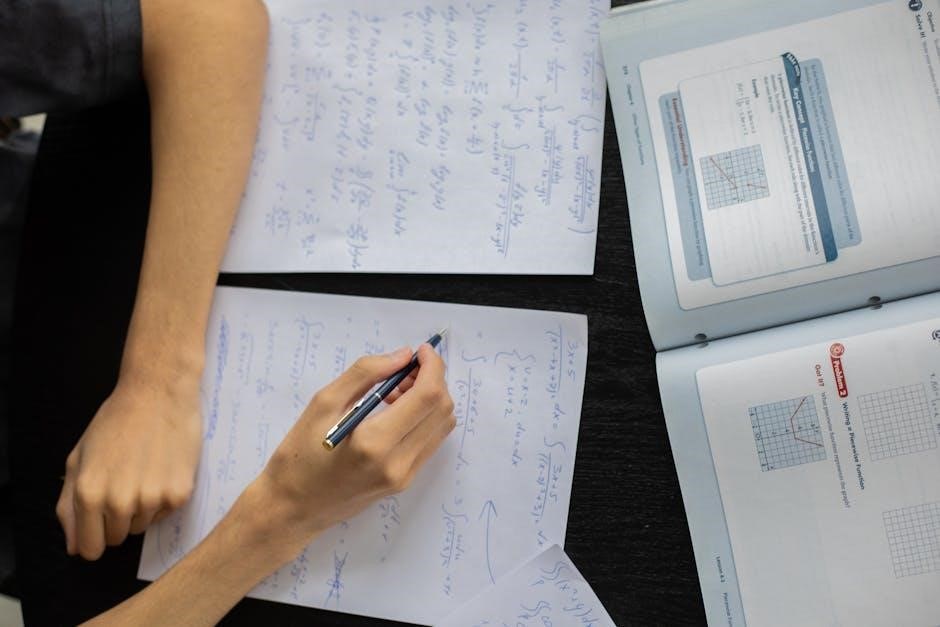Balancing chemical equations is a fundamental skill in chemistry‚ ensuring the Law of Conservation of Matter is upheld. This guide provides a systematic approach to mastering the process through clear steps and practical examples‚ making it easier to understand and apply in various chemical reactions.
Importance of Balancing Chemical Equations
Balancing chemical equations is crucial for maintaining the Law of Conservation of Matter‚ ensuring equal numbers of atoms on both sides. This process is essential for stoichiometry‚ enabling accurate calculations of reactant and product quantities. Properly balanced equations allow chemists to predict reaction outcomes‚ design experiments‚ and understand chemical processes. They form the foundation for solving real-world problems in fields like engineering‚ medicine‚ and environmental science.
Brief Overview of the Process
Balancing chemical equations involves systematically equalizing the number of atoms of each element on both sides. Start by writing the unbalanced equation‚ then count atoms of each element. Use coefficients to balance elements‚ prioritizing unique elements first. Finally‚ verify the balance by ensuring equal atoms and charges on both sides. This methodical approach ensures accuracy and adherence to chemical principles. Regular practice enhances proficiency in balancing complex reactions efficiently.

Step 1: Write the Unbalanced Equation
Begin by writing the chemical equation with correct formulas for reactants and products. Identify the reactants and products‚ ensuring all elements are represented accurately. This step establishes the foundation for balancing.
Identifying Reactants and Products
Identifying reactants and products is the first step in balancing a chemical equation. Reactants are the substances consumed in the reaction‚ while products are the substances formed. Begin by listing all elements involved and their chemical formulas. Organize the information in a table to track each element’s count on both sides. This clear separation ensures accuracy and simplifies the balancing process. Common reactions include synthesis and decomposition‚ where elements combine or break apart. Always note the state of matter (solid‚ liquid‚ gas) for clarity.
Writing Chemical Formulas
Writing chemical formulas accurately is crucial for balancing equations. Begin by identifying the chemical symbols of all elements involved. Pay attention to polyatomic ions and their charges. For compounds‚ use subscripts to denote the number of atoms. For example‚ water is H₂O‚ and carbon dioxide is CO₂. Ensure the formulas represent the correct composition of reactants and products. This step lays the foundation for tallying atoms and achieving balance.
Step 2: Count the Atoms
Tallying atoms ensures clarity and accuracy. List each element’s count on both sides‚ noting any discrepancies. This step is essential for identifying what needs balancing.
Tallying Reactants and Products
Tallying involves counting each type of atom on both sides of the equation. Create a table to list the number of atoms for each element in reactants and products. This step ensures clarity and helps identify discrepancies. By systematically comparing each element‚ you can determine which atoms need balancing. Accuracy is crucial here to avoid errors in subsequent steps. This process forms the foundation for achieving a balanced equation.
Creating a Table for Clarity
A table is an effective tool for organizing the count of atoms. List each element and tally its occurrences in reactants and products. Separate columns for reactants and products provide clear visibility. This table helps identify which elements are imbalanced and by how much. By systematically recording each element’s count‚ you can methodically approach balancing the equation. This visual aid simplifies the process and ensures accuracy in tracking atom counts.
Step 3: Balance the Elements
Start by balancing elements that appear only once‚ then address oxygen and hydrogen. Adjust coefficients systematically to ensure equal atoms on both sides of the equation.
Starting with Unique Elements
To balance the chemical equation ( ext{H}_3 ext{PO}_4 + ext{KOH}
ightarrow ext{K}_3 ext{PO}_4 + ext{H}_2 ext{O} )‚ follow these steps:
Count the Atoms:
⎯ Reactants: 3 H (from ( ext{H}_3 ext{PO}_4 )) + 1 H (from KOH) = 4 H; 1 P; 4 O (from ( ext{H}_3 ext{PO}_4 )) + 1 O (from KOH) = 5 O; 1 K.
⎯ Products: 2 H (from ( ext{H}_2 ext{O} )); 1 P; 4 O (from ( ext{K}_3 ext{PO}_4 )) + 1 O (from ( ext{H}_2 ext{O} )) = 5 O; 3 K.
Balance Potassium (K):
⎻ There is 1 K on the reactant side and 3 K on the product side. Place a coefficient of 3 in front of KOH to balance K.
Balance Hydrogen (H):
⎻ With 3 KOH‚ there are 3 H on the reactant side‚ plus 3 H from ( ext{H}_3 ext{PO}_4 )‚ totaling 6 H. Place a coefficient of 3 in front of ( ext{H}_2 ext{O} ) to have 6 H on the product side.
Balance Oxygen (O):
⎻ Reactants: 4 O (from ( ext{H}_3 ext{PO}_4 )) + 3 O (from 3 KOH) = 7 O.
⎻ Products: 4 O (from ( ext{K}_3 ext{PO}_4 )) + 3 O (from 3 ( ext{H}_2 ext{O} )) = 7 O.
Final Balanced Equation:
[
ext{H}_3 ext{PO}_4 + 3 ext{KOH}
ightarrow ext{K}_3 ext{PO}_4 + 3 ext{H}_2 ext{O}
]
This ensures all atoms are balanced according to the Law of Conservation of Matter.

Balancing Oxygen and Hydrogen
Balancing oxygen and hydrogen atoms often involves adding H₂O or H⁺ to either side of the equation. Start by balancing oxygen with H₂O‚ then address hydrogen by adding H⁺ or H₂O as needed. For charged species‚ ensure the overall charge is balanced by adding electrons if necessary. This step ensures all atoms and charges are accounted for‚ maintaining the equation’s stoichiometric and electrochemical balance.
Balancing Other Elements
After balancing oxygen and hydrogen‚ focus on other elements like metals‚ non-metals‚ and polyatomic ions. Start by identifying elements that appear in only one compound on each side. Balance these by adjusting coefficients in front of the compounds. For example‚ if aluminum (Al) appears in two compounds‚ balance it by assigning coefficients that equalize its count. This step ensures all elements are accounted for‚ maintaining the equation’s balance.

Step 4: Assign Coefficients

Assign coefficients to compounds to balance the equation. Start with the simplest elements and adjust iteratively. Ensure the smallest whole-number ratio is achieved for all atoms.
Using Coefficients Effectively
Coefficients are essential for balancing chemical equations. They represent the number of molecules of each compound involved in the reaction. Start by assigning coefficients to the simplest elements first‚ such as unique or isolated atoms. Adjust the coefficients systematically to ensure the same number of atoms on both sides. Always use the smallest possible whole numbers to maintain simplicity. Remember‚ coefficients cannot be fractions or decimals in a balanced equation. This method ensures clarity and accuracy in representing the reaction.
Applying the Algebraic Method
The algebraic method involves assigning variables to unknown coefficients and creating equations based on atom counts. For each element‚ set up an equation to equate the total atoms on both sides. Solve the system of equations to find the coefficients. Ensure the smallest whole numbers are used to maintain simplicity. This method minimizes trial and error‚ providing a clear‚ systematic approach to balancing complex chemical equations accurately.

Step 5: Verify the Equation
After balancing‚ verify that the equation is correct by ensuring the same number of atoms and charges on both sides. Check that all coefficients are whole numbers and cannot be simplified further. This step ensures accuracy and confirms that the Law of Conservation of Matter is upheld in the chemical reaction.
Checking Atom Balance
To verify atom balance‚ count the number of each element on both sides of the equation. Each element must have the same total count on the reactant and product sides. For example‚ in the equation 2H2 + O2 → 2H2O‚ there are two hydrogen molecules and one oxygen molecule on the left‚ and two hydrogens and one oxygen in each water molecule on the right‚ ensuring balance. This step ensures the equation adheres to the Law of Conservation of Matter.
Ensuring Charge Balance
To ensure charge balance‚ the total charge on both sides of the equation must be equal. This is particularly important in redox reactions where electrons are transferred. After balancing atoms‚ check the sum of charges on each side. If they differ‚ adjust by adding electrons (e⁻) to the side with excess positive charge. For example‚ in oxidation half-reactions‚ electrons are added to balance the charge. This step ensures the equation is both atomically and charge-balanced.

Common Types of Chemical Reactions
Chemical reactions can be categorized into synthesis‚ decomposition‚ replacement‚ and combustion reactions. Each type follows distinct patterns‚ making them easier to recognize and balance systematically.
Synthesis Reactions
Synthesis reactions involve the combination of two or more reactants to form a single product. They follow the general form: A + B → AB. For example‚ metals reacting with acids produce a salt and hydrogen gas. To balance these equations‚ count the atoms of each element on both sides and assign coefficients to equalize them. Simplify the coefficients to their lowest whole-number ratio for the final balanced equation.
Decomposition Reactions
Decomposition reactions involve a single reactant breaking down into two or more products. They follow the general form: AB → A + B. Examples include water decomposing into hydrogen and oxygen or calcium carbonate breaking down into calcium oxide and carbon dioxide. To balance these equations‚ start by identifying the reactant and products‚ then count the atoms on each side. Assign coefficients to ensure the number of atoms is equal‚ simplifying if possible.
Replacement Reactions
Replacement reactions involve one element displacing another from a compound‚ following the form: A + BC → AC + B. For example‚ zinc replacing copper in copper sulfate solution. To balance‚ list the reactants and products‚ then count and equalize atoms. Use coefficients to achieve balance‚ ensuring each element’s count matches on both sides. This type of reaction helps understand chemical reactivity and periodic trends.
Combustion Reactions
Combustion reactions involve a substance reacting with oxygen to produce carbon dioxide and water. For example‚ methane combustion: CH₄ + 2O₂ → CO₂ + 2H₂O. To balance‚ start by counting carbon‚ hydrogen‚ and oxygen atoms on both sides. Use coefficients to equalize the atoms‚ ensuring the equation adheres to the Law of Conservation of Matter. These reactions are exothermic and commonly involve hydrocarbons.
Tips and Best Practices
Start by balancing elements appearing once‚ then handle oxygen and hydrogen. Use coefficients‚ not subscripts‚ to maintain formula integrity. Simplify coefficients when possible.

Simplifying Coefficients
After balancing‚ simplify coefficients by dividing by their greatest common divisor. For example‚ if coefficients are 2‚ 4‚ and 6‚ divide by 2 to get 1‚ 2‚ and 3. This ensures the smallest whole numbers are used. Always check that the simplified coefficients maintain the atom balance. Proper simplification enhances clarity and ensures the equation is in its most reduced form for accuracy and readability.
Avoiding Common Mistakes
Common mistakes include incorrect counting of atoms‚ forgetting to balance all elements‚ and improper use of coefficients. To avoid these‚ tally atoms systematically‚ balance one element at a time‚ and ensure coefficients are applied correctly. Regularly verify each step to catch errors early. Consistent practice and attention to detail are key to mastering the balancing process effectively and efficiently. Always double-check the final equation for accuracy.

Balancing Chemical Equations Worksheet

This worksheet provides practice problems to hone your skills in balancing chemical equations. Each problem includes reactants and products‚ with space to write coefficients. Solutions are included for review.
Sample Problems
Practice balancing these chemical equations:
- ___ Al + ___ Cl2 → ___ AlCl3
- ___ Na + ___ H2O → ___ NaOH + ___ H2
- ___ CaCO3 → ___ CaO + ___ CO2
- ___ P4 + ___ O2 → ___ P4O10
Each problem provides reactants and products. Add coefficients to balance the atoms on both sides. Solutions are included for review and self-assessment.
Solutions and Explanations
Here are the solutions to the sample problems:
- 2 Al + 3 Cl2 → 2 AlCl3
Explanation: Aluminum and chlorine atoms are balanced by adding coefficients 2 and 3. - 2 Na + 2 H2O → 2 NaOH + H2
Explanation: Sodium‚ hydrogen‚ and oxygen are balanced with coefficients 2‚ 2‚ and 1. - CaCO3 → CaO + CO2
Explanation: No coefficients needed‚ as all atoms are already balanced.
These solutions demonstrate the systematic approach to balancing chemical equations effectively.
Balancing chemical equations is a crucial skill in chemistry‚ requiring attention to detail and systematic practice. Mastery of this process enhances problem-solving abilities and understanding of chemical reactions.
Recap of the Steps
Balancing chemical equations involves systematic steps: write the unbalanced equation with correct formulas‚ tally atoms on both sides‚ and balance elements starting with unique ones. Balance oxygen and hydrogen next‚ followed by other elements. Assign coefficients‚ ensuring the simplest whole-number ratio. Verify by checking atom and charge balance on both sides. Practice and a methodical approach are key to mastering this essential chemistry skill.
Importance of Practice
Regular practice is essential for mastering the skill of balancing chemical equations. It helps develop problem-solving abilities and improves understanding of chemical reactions. Consistent practice allows learners to recognize patterns‚ handle complex equations with ease‚ and apply balancing techniques to various reaction types. Over time‚ practice builds confidence and fluency‚ transforming a challenging task into a manageable process.







